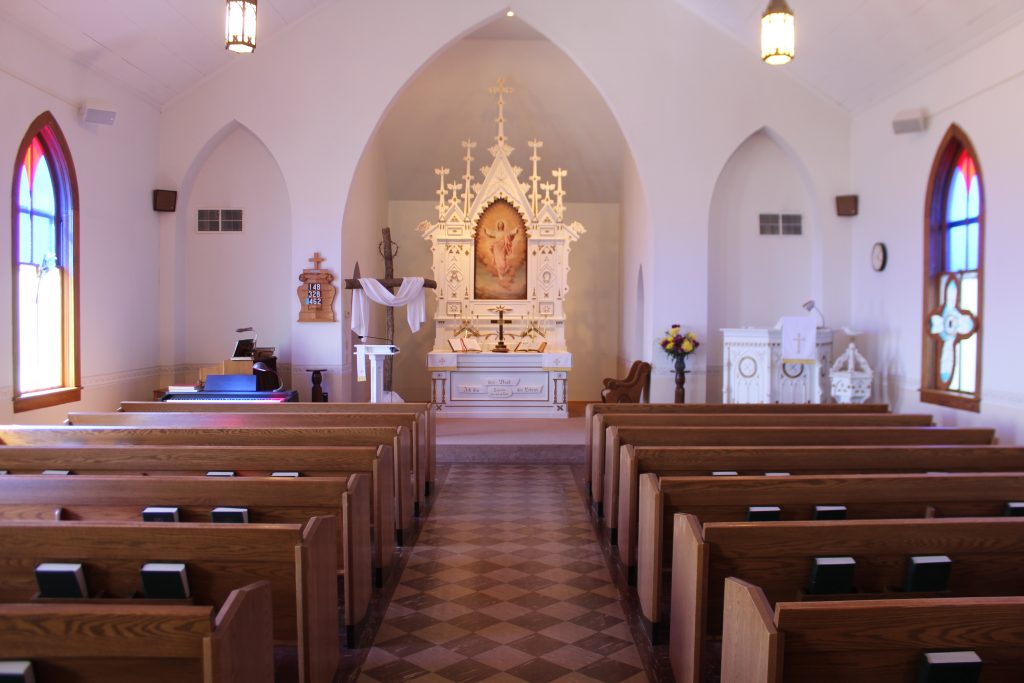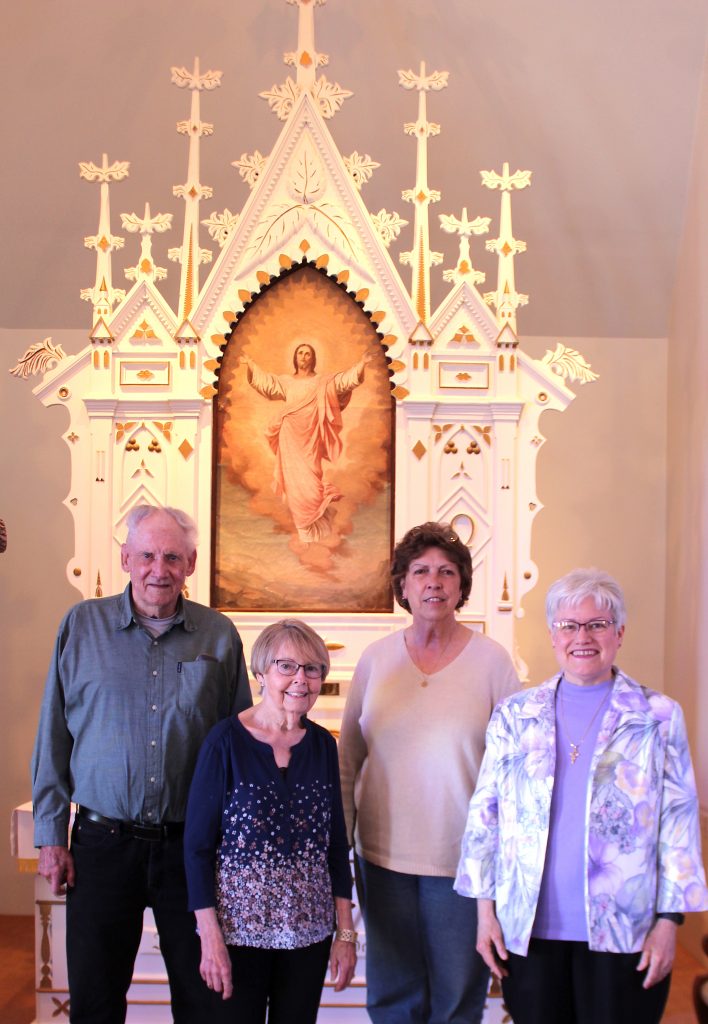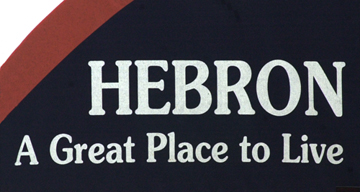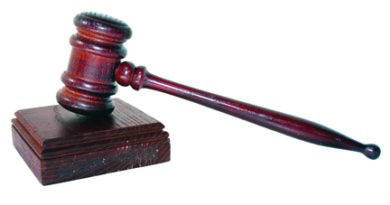The little congregation that could

On May 9, the congregation of St. Paul’s Lutheran Church in Gilead will gather for a special worship service to celebrate 25 years of perseverance driven by their steadfast faith in God.
“It’s a story of survival and resilience, and God’s grace,” Pastor Kristin Hileman said. “The fact is this small rural congregation did not fade while they worked together.”
The work began the night of May 8, 1996 as storm spotter Lyle Keilwitz was the first to see the historic church southwest of Gilead destroyed in the aftermath of several tornadoes that caused an estimated $1.44 million in damages to homes, barns, livestock, pivots and other machinery.
“It was the saddest day for our congregation,” Alvina Krueger told the Hebron Journal-Register for the May 15, 1996 issue. “There are so many memories there at church — I felt like I’d lost my best friend. I shed some tears. I think most of us did.”
Charles Fangmeier was headed home from Bruning Grain in Belvidere and listening to the reports of tornado warnings.
“Where it hit, the area sounded very familiar. I drove over to see if it had hit at Todd and Crystal’s (Fangmeier) place,” he said.
He kept driving and saw the damage at Ernest Naiman’s farmstead and on the Krueger property. Then, he saw the church.
“The picture was devastating. LEVELED! Unbelievable,” Fangmeier said. His is one of many memories captured in “And the Miracles that Happened,” a recollection of the storm and the congregation’s response.
Fangmeier and his Uncle Dickie (William Fangmeier) were at the site of the church that night. Other people were there wondering what could be done.
“By this time, it was starting to get dark. I said I was going to get a tarp and over up the altar so Jesus’ Ascension wouldn’t get wet, ruined,” Fangmeier said. “Then Dickie and I decided to stay at this place overnight, hoping looters would not show up.”
Katholene Fangmeier was sitting on the porch swing watching the lightning storm.
“The telephone rang and it was Crystal. She said there had been a tornado and hit the Art Fangmeier farm. We went immediately and down the Hubbell road. There were trees, lines, etc., on the road. It had not hit there, but we drove east and found out the church was down. SO SAD. It was gone,” she said.
That tornado struck the 91-year-old church at 8:55 p.m. The building had just been refurbished, thanks to a $45,000 donation from former member Olivia Rodenbeck of California.
“If I recall, we were discussing if the insurance should be increased at a council meeting,” Carol Krueger said.
On the evening of the tornado, the choir had gathered for practice. Everyone had gone home by the time the storm barreled through. Congregation members thought about what could have happened because other activities were scheduled at the church that week.

Rodney and Elnora Hellbusch, Carol Krueger and Pastor Kristine Hileman stand in front of the hand-crafted altar and portrait of Jesus that was one of the few items to survive the 1996 tornado.
“I couldn’t believe it. I was just there,” Elnora Hellbusch said.
“I will never go down into a basement for a tornado,” Krueger said. Only the basement walls of the church and the front steps stood among the rubble. Everything else, except the hand-carved altar, pulpit and baptismal font, communion ware and hymnals, was gone:
“The pews were broken and splintered. The organ and piano were ruined. The pulpit, the altar and baptismal font were very dirty, but only slightly damaged and repairable. The hymnbooks survived, with water, glass and dirt embedded. They were cleaned and are still used today,” the St Paul recollection reads.
The church’s salvageable items were stored in the old schoolhouse in Gilead, along with the broken pews that would later be auctioned as keepsakes and used to make a pastor’s bench and a hymn board.

As Gilead Fire Chief Brad Coordsen observed the damage after the tornado, he told his mother all that remained was a prayer.
“We worked at the debris for about a week,” Rodney Hellbusch said. “We saved a lot of the 2×8’s and put them in pile and later sold them. We finally had the county come with their dozer and dig a hole. They had to fill in the hole where the church basement was.”
A meeting was held immediately to determine the church’s future. Possibilities were using the school house, building a new church on the site or using Gilead’s community hall. The abandoned Catholic Church in Gilead that was supposed to have been destroyed the year prior, was also a possibility.
The congregation had decided it would continue as a church and temporarily hold services in the community hall.
Meanwhile, the purchase of the Catholic Church was pursued by members of St. Paul and approved by the Catholic Diocese, which stated the church had to be returned should the congregation stop using the building.
They remodeled using drywall, paint and elbow grease. The spires on the altar were replaced and the altar, pulpit and baptismal font were cleaned and painted. New stained glass was installed.
And on August 11, 1996, the congregation held its first service in the new church, despite all the work that still needed to be done. Pastor Duane Holst presided over the service and communion.
The St. Paul church bell wouldn’t fit in the new church’s tower, so the crew used the former Catholic Church bell and installed it Oct. 15, 1996. The new building wouldn’t be dedicated as St. Paul’s Lutheran Church until April 19, 1998, nearly two years after the tornado. The St. Paul bell would eventually hang in a bell tower constructed at the cemetery.
The cemetery tower contains the cornerstone from the old church. It was dedicated May 31, 1999, and on the front of the tower are the words, “Jesus Still Leads On,” with the dates 1904-1996 below.
Congregation members also worked to raise funds for the new church — their pancake feed brought $8,197, donations came from near and far, and from people they didn’t know; the insurance money totaled $63,000; and a soup supper helped with the fellowship hall that is connected to the church.
Krueger said the confessional of the old Catholic church was taken out to build a walkway from the sanctuary to the fellowship hall. Ray Asche made the connecting hallway.
“It’s wonderful. We had someone in a walker for Easter and they used the ramp. Accessibility is so important,” Hileman said.

“I don’t think not continuing was an option,” Krueger said about the congregation’s determination to move forward after the tornado.
“A very small congregation is still here and still thriving,” Hileman said. “God gives you blessings despite trials.”
Ron Hellbusch saw blessings through the trials. He crafted a cross for the new church using the broken fragments of the stained glass windows from the destroyed church:
“The design of the stained glass cross at St. Paul’s was based on the leaf pattern of the cross on the top of the altar. Ron Hellbusch, designed the cross and changed it to resemble a budding flower to represent renewal. The center of the window is Martin Luther’s symbol of Christ. The fragmented heart in the center stands for the sorrow of losing our church building. The pinwheel effect around the center represents the tornado. It is made of broken fragments of windows collected from the debris field. The buds at the end of the arms of the cross stand for God’s continuing promise to us. The colored flowering buds (also fragments collected) on the end are meant to stand for the fruition of our congregation’s faith to go on after the disaster.”
Their perseverance in faith has been told and retold, including the story about the pews in the new church that replaced noisy folding chairs.
Holst suggested they look in a Lutheran magazine, and he was right — pews from Crescent, Iowa were in an advertisement.
The Hellbusches drove to Crescent, Iowa to have a look at the pews that were due for burning the next day.
They were the right color and fit for the new sanctuary, yet another small miracle for the St. Paul congregation.
In the past 25 years, St. Paul reached another milestone — the church’s 125th anniversary in 2015.
Rodney Hellbusch captured the spirit of the congregation in a poem written for the 125th celebration:
“At times it’s hard to see God’s plan, when our own get in the way
When we see all the things that God has done, what a small role we play.
The worst I can remember was the tornado that took our church
For a place to hold our services, we began to search.
Thank God for our friends in Gilead, they came to our aid
In the town hall and the old school, a gathering place was made
A friend offered this church to us, which truly fit our need
Some repairs were made and painting done, and pews from another kind deed.
A parish hall was added and we were all set to go
Just sit back and worship and see how our faith would grow.”





